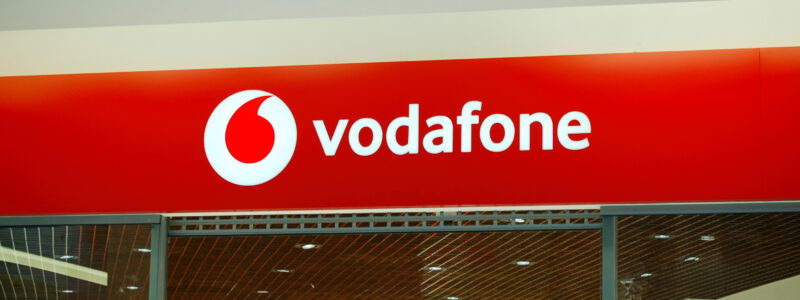
Ukraine’s second-largest mobile operator, Vodafone Ukraine (VFU), increased its revenue by 14% in January-March 2025 compared to the same period in 2024, to UAH 6.59 billion, while reducing its net profit by 24% to UAH 697 million.
The 24% decline in net profit compared to the same period last year was due to the restructuring of Eurobonds, increased investments, and higher tax payments, according to a statement posted on VF Ukraine’s official website on Friday.
The main drivers of the company’s revenue growth were increased data usage, growth in the number of Internet users and, as a result, growth in revenues from both mobile and fixed communications. This also contributed to a 5% increase in OIBDA to UAH 3.34 billion, the report said.
ARPU (average revenue per user) in the first quarter of 2025 increased by 15% compared to the first quarter of last year to UAH 128.1/month. At the same time, the subscriber base in the reporting period decreased slightly by 0.6% to 15.7 million users.
The OIBDA margin remained high at 50.7%. It decreased by 4.6 percentage points compared to the first quarter of 2024, mainly due to higher electricity costs, increased expenses for ensuring the energy stability of the network, and higher fees for the use of radio frequency resources.
Vodafone Ukraine almost doubled its infrastructure investments in January-March 2025, which grew by 95% compared to the same period in 2024, to UAH 1.59 billion.
Energy independence is among the priority areas in which the company has invested. In the first three months of 2025, Vodafone Ukraine significantly improved the energy resilience of its network, in particular by increasing the number of mobile communication points capable of operating during prolonged power outages by 1.5 times, according to the report.
The company invested in expanding coverage and increasing network capacity, as well as in preparations for next-generation technologies. Vodafone Ukraine launched 1,171 new network standards to improve coverage and connection quality. The operator also began connecting mobile base stations using passive xPON optical networks, which will enable a smoother transition to next-generation mobile technologies—5G and, in the future, possibly 6G.
During the first quarter, work continued on the development and modernization of fixed-line networks. Vodafone Ukraine began upgrading the telecommunications infrastructure of fixed-line operator Frinet and continued to expand fixed broadband networks using modern GPON technology.
In January-March, Vodafone Ukraine’s Home Internet service, which remains operational even during power outages, was launched in another 124,000 households. The company’s total fixed-line coverage across all technologies now exceeds 1.9 million households. The company is actively expanding its presence in new regions – in Kyiv, Odesa, Dnipro, Kharkiv, Lviv, Zaporizhia, Mykolaiv, Ivano-Frankivsk, Poltava, Chernihiv, Zhytomyr, Lutsk, Rivne, and Ternopil, according to the report.
Vodafone Ukraine has also launched its first 3-in-1 tariff line, GigaCombo, which combines mobile communications, fixed Internet, and television in a single tariff package.
In total, since the start of the full-scale war, Vodafone Ukraine has invested over UAH 17 billion in the development of telecommunications infrastructure in Ukraine.
In February 2025, Vodafone Ukraine successfully completed the restructuring of its Eurobonds, repurchasing bonds worth almost $100 million. The remaining liabilities now amount to $300 million, according to the company’s statement.